We liked this museum so much that we visited at least four times during
our five-week stay at the nearby Blue Angel Naval Recreation Area.
If
you're camped at Oak Grove on the NAS Pensacola base, it's even more
convenient to visit -- the museum is practically across the road.
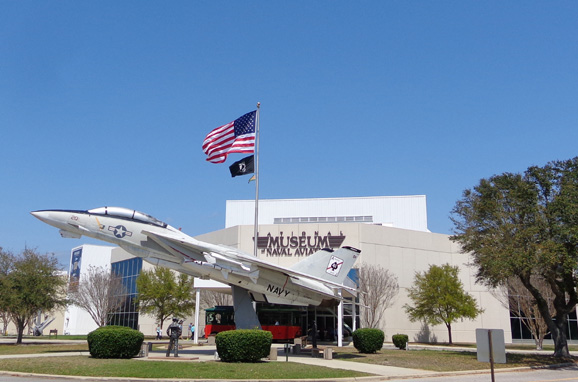
During our first visit we were almost overwhelmed by all the aircraft
and exhibits on display. Jim commented that he liked it even more than
the Smithsonian's National Air & Space Museum in Washington, D.C.
Now that's saying something!
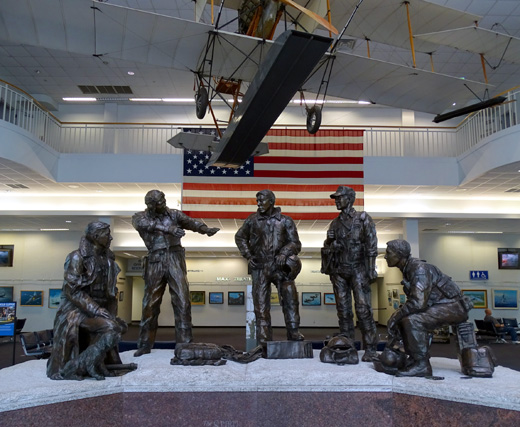
The large "Spirit of Naval
Aviation" sculpture in the lobby depicts pilots from WWI to
Desert Storm.
But you don't have to have military connections to visit this awesome
museum. It is FREE and open to the public almost every day of the year.
It is so popular that millions of people visit the museum each year.
Because the exhibits are spread out over two large buildings (the
main one has a very high ceiling and second-floor balcony), the museum
didn't seem that crowded to us on any of our visits.
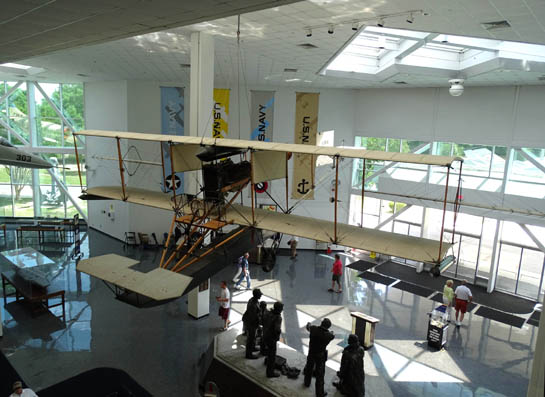
View of lobby from second-floor balcony
Tuesdays and Wednesdays in the spring are the most crowded days at
the museum. That's when the
Blue Angel precision aerial team has
its practices. Viewers are directed to the museum parking lot and while
they are there, many of them go into the museum before or after the air show.
Although we often watched the practices from various places on base,
we avoided going inside the museum on those days.
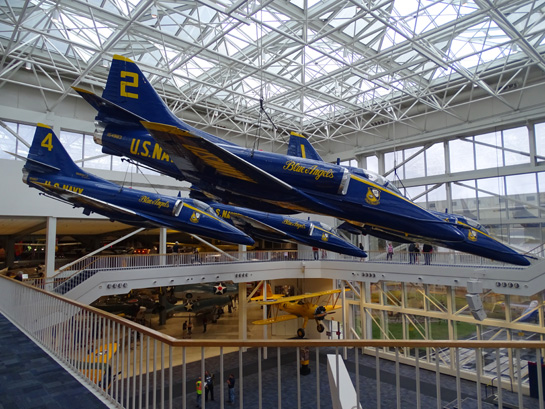
Four A-4 Sky Hawks hang from the
ceiling in the auditorium.
There really is a lot to see and do in this museum. Most kids from 3 to 103
will enjoy it.
You can spend all day
perusing the exhibits, examining the numerous aircraft on the floor and
suspended from the ceilings, watching IMAX
movies (gotta pay for those), or playing with various simulators (some of
those have a fee, too).
The movies are $8 per person or $15 for two. Jim watched a good WWII
movie and we both watched one about how the Blue Angels train. That gave us even
more appreciation for the skills the pilots and their support team possess.
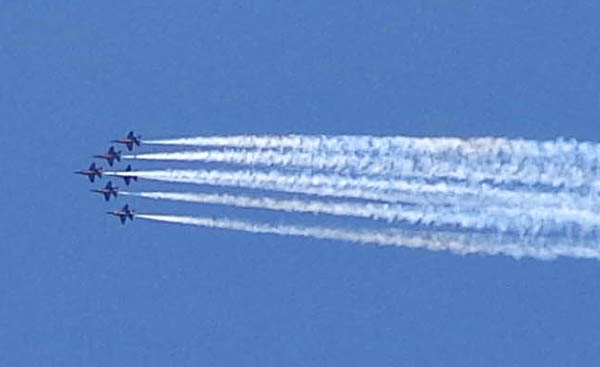
There are several simulators.
The only one we did, which was free,
was the Virtual Flight Deck where we felt like we were on an actual
aircraft carrier's deck when helicopters, jets, and other planes were
coming and going -- our seats shook, the wind blew, and it was
realistically noisy (next photo below).
That was cool, and well-narrated by a retired Navy pilot who lives in
Pensacola. We talked with him about 15 minutes after the simulation was
over (second photo below)
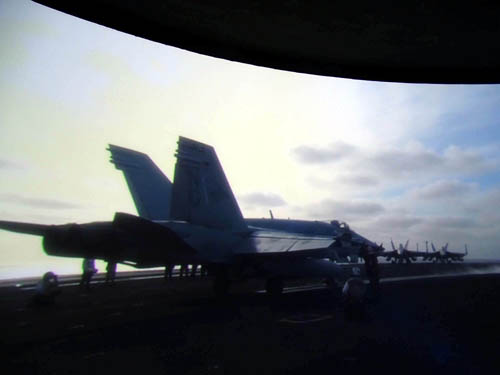
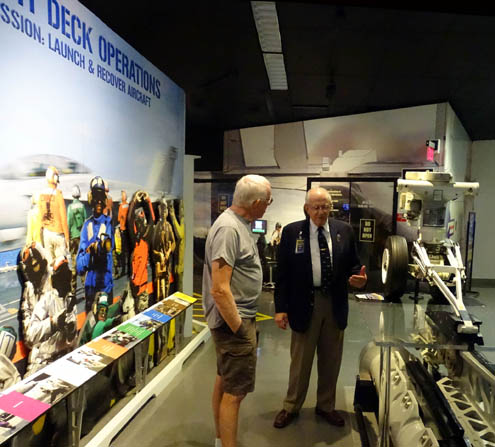
On our third visit
to the museum we joined a small group for a 2+ hour tour narrated by
Lt. Col. Terry Bryan, a retired Marine described by another volunteer as
the museum's most popular tour guide.
He was fascinating and we got to talk to him alone for a while after the
tour.
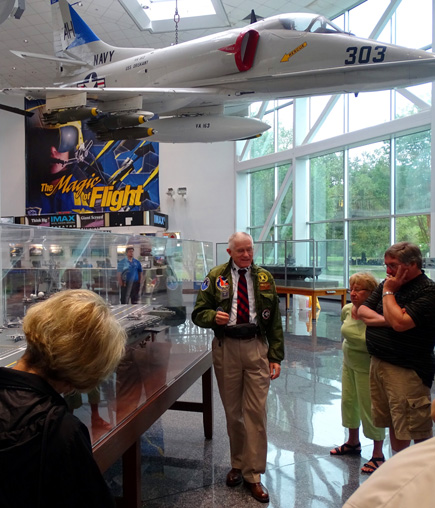
More and more folks joined us as we walked around the first floor and
out to the hangar where the more modern planes are displayed.
Terry, age 73, is a live wire. He was an aviator and engineer who flew
65 different kinds of aircraft during his military career and flew 300
different missions in Viet Nam. He was there the same time as Jim, so
they compared notes after the tour was over:
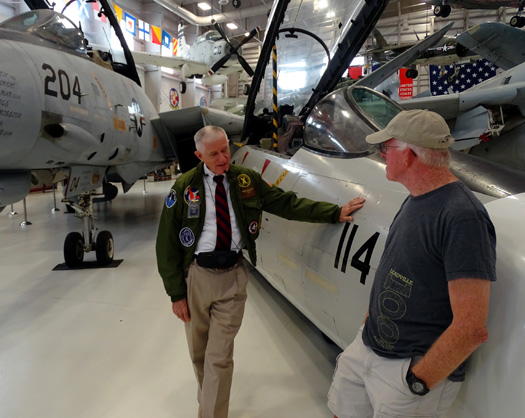
Terry
was very detailed but interesting as he told us about the different
Naval and Marine aircraft, regaled us with tales of "bad air days" and
good, described different WWII battles, etc. A former runner, he now
does biathlons (walks and rides), takes adventure vacations with his
lady friend (he's a widow), and climbs mountains in the Andes, Alps,
etc.
Very cool guy and we learned a LOT that day.
If you go to the
museum we recommend you join one of the tours. Our mistake was not doing
this the first time we were there, although it's also fun to
explore on your own.
SCENES FROM THE FIRST FLOOR OF THE MAIN BUILDING
Numerous older aircraft are displayed on the floor and from the high
ceiling of the main building, all with details about their specs and
uses. These are just a few of them:
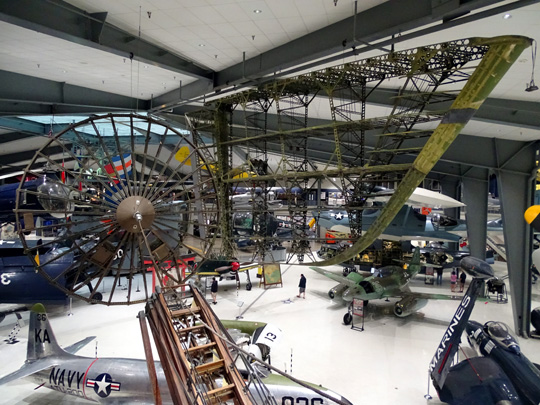
Aircraft range from the earliest modes of flight to
spacecraft retrieved by Navy vessels.
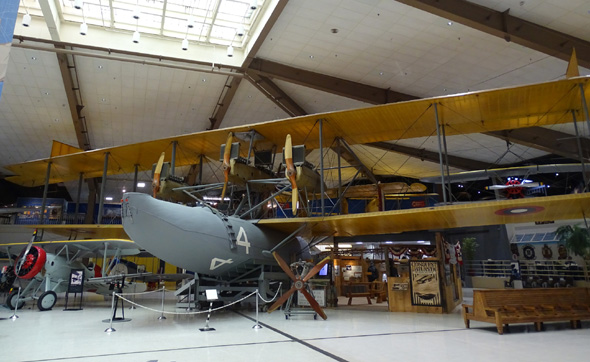
Above and below: This NC-4
(Navy/Curtiss) was the first plane to fly nonstop across the Atlantic.
The year was 1919. With a
wingspan of 126 feet, it takes up a lot of room at the museum!
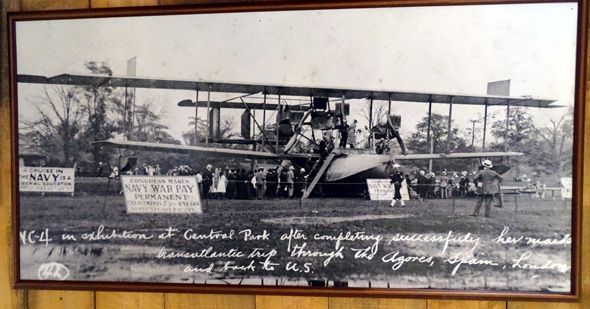
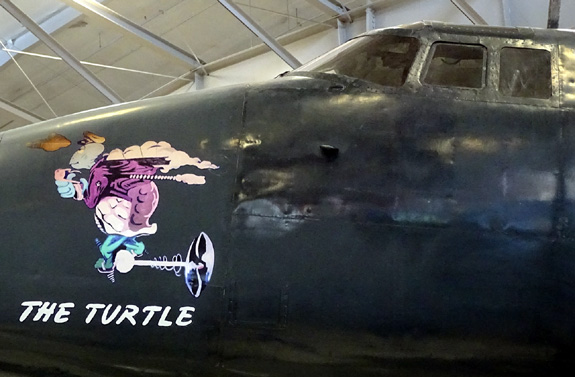
The "Truculent Turtle," a P2V
Neptune, flew a record 11,235.6 miles without refueling in 1946.
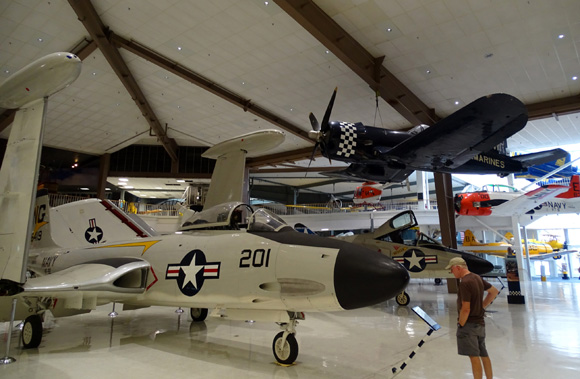
Jim inspects one of several
aircraft with wings that fold to allow room for more on an aircraft
carrier.
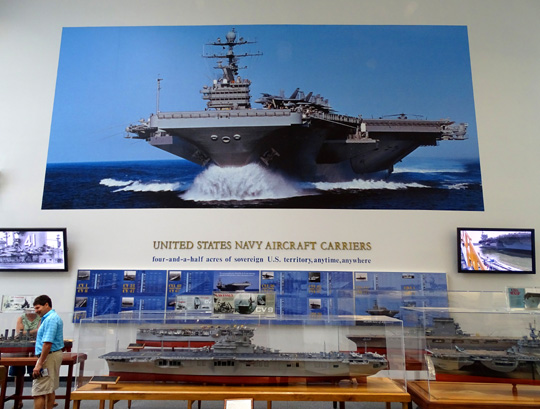
Model of the USS Ronald Reagan, a
1,092-foot long CVN-76 nuclear-powered aircraft carrier
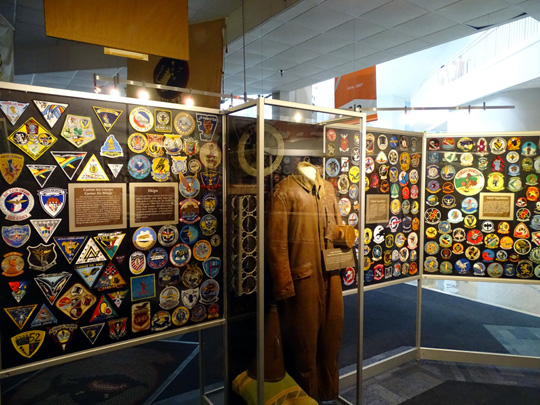
Above and below: lots of aviation patches
from the Navy, Marines, and Coast Guard
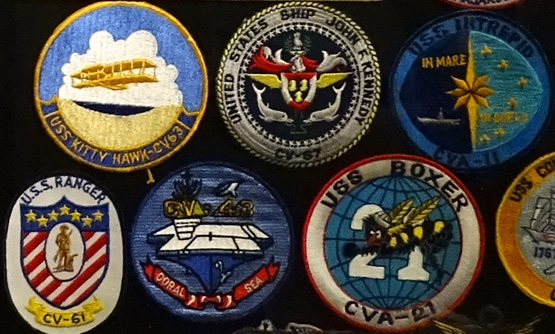
That's a small sampling of what's on the first floor of the main
building. The IMAX theater is also located there, a cafe, a children's play
area, some simulators, and other things I've forgotten since my last visit.
SECOND FLOOR BALCONY
It's amazing how many different things are displayed on the balcony
that surrounds the main floor. The aircraft carrier simulator we
experienced is here. There is an interactive display regarding how
weather conditions affect flight. Aircraft art is displayed.
Here are some other interesting exhibits:
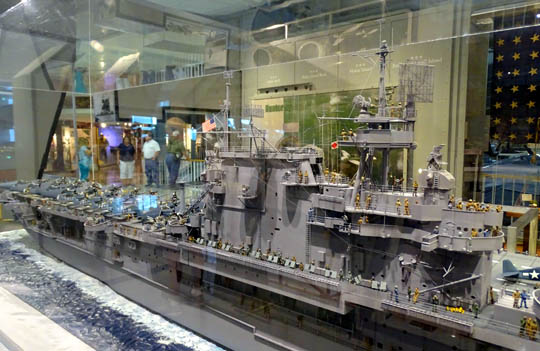
Above and below: very
large, detailed model of the USS Enterprise CV-6 carrier
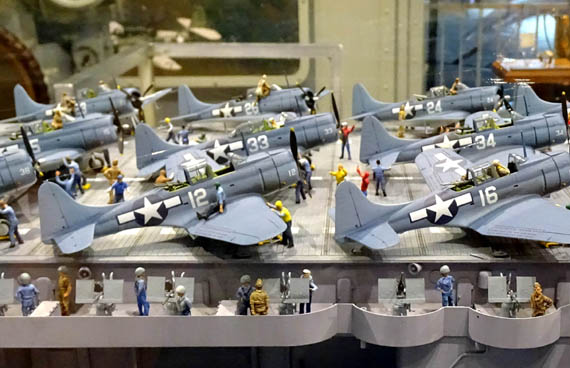
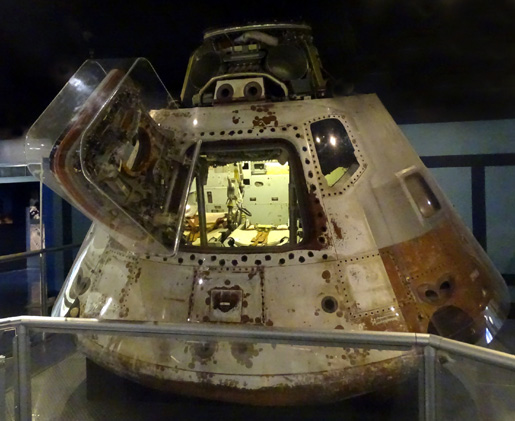
1973 Skylab 2 command module
About one-quarter of the balcony's space is devoted to life-sized
displays depicting a "slice of life" for military men and women at home
and overseas during WWII.
I probably enjoyed this section of the museum more than any other.
Visitors walk past the 1940s house and storefronts and can either walk
into them or at least peer inside the windows at items from that era.
Other scenes depict life on board ships and land overseas during the war.
Here are some scenes:
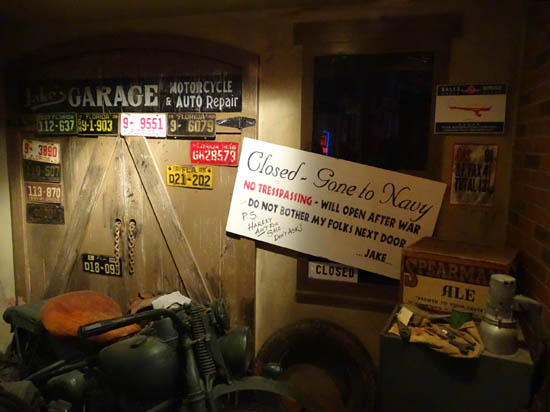
Depiction of a motorcycle and
auto repair shop belonging to n man who left to fight the war.
Loved the PS: "Harley ain't for
sale. Don't ask!!" (And don't bother his parents next door,
either.)
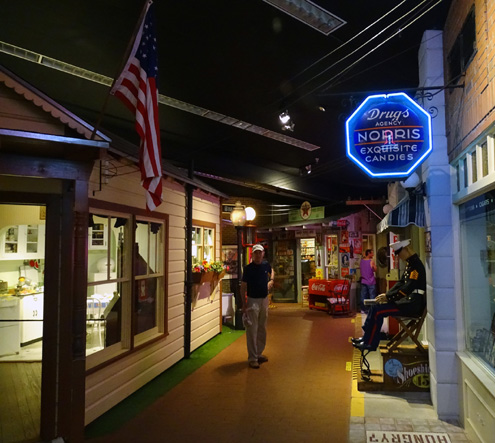
"Street side" scene
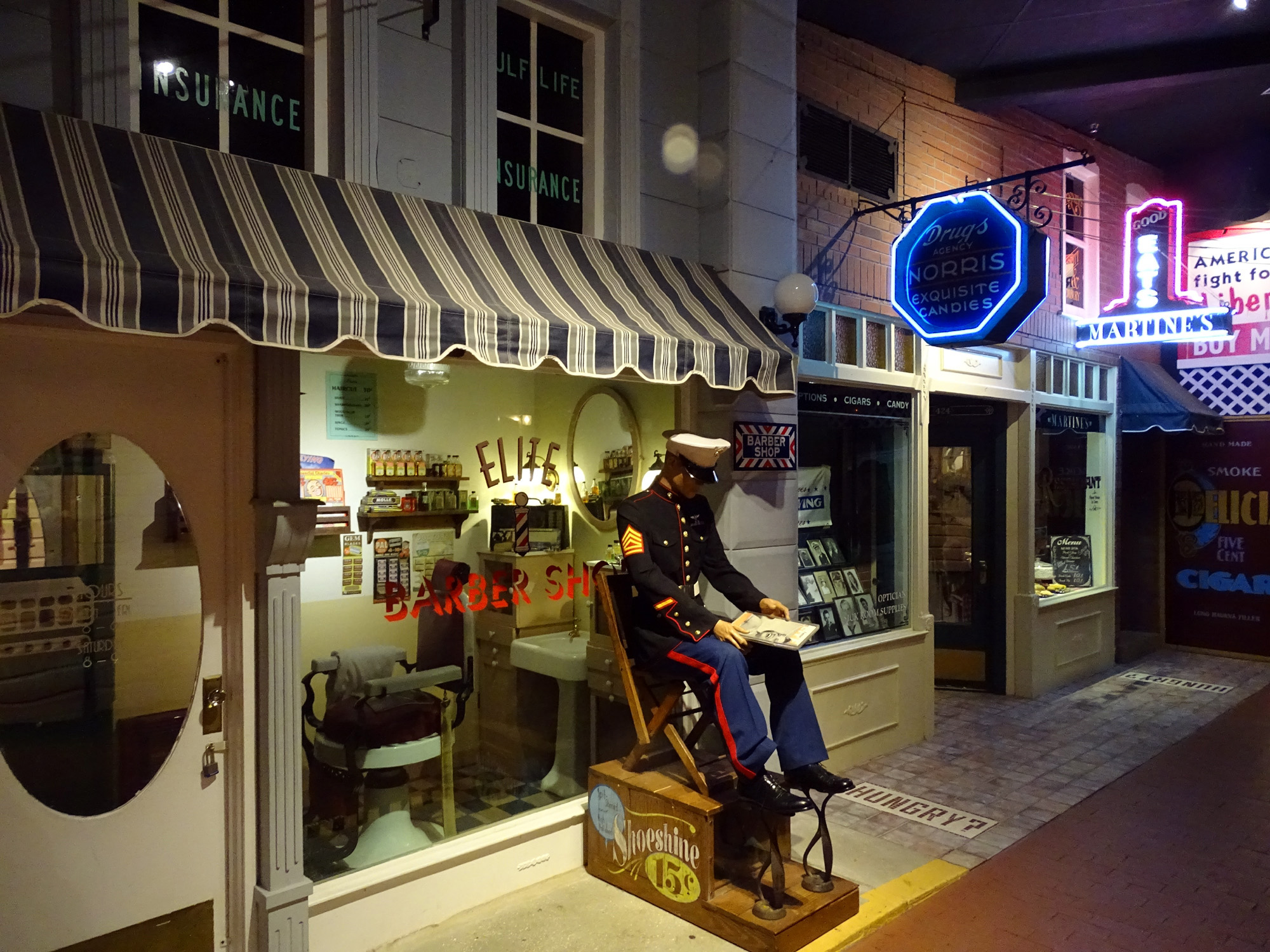
Getting a shoe shine outside the
barber shop
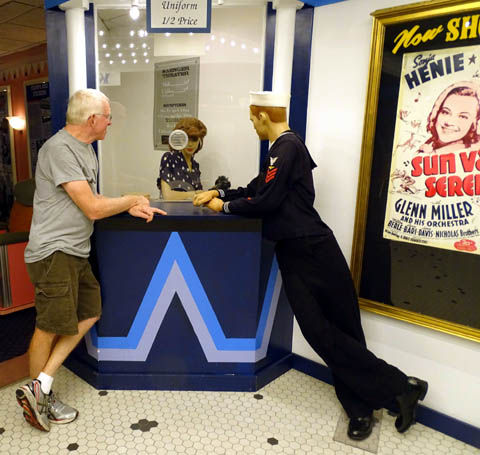
Mirror images: Jim poses by
a Navy mannequin at the movie theater
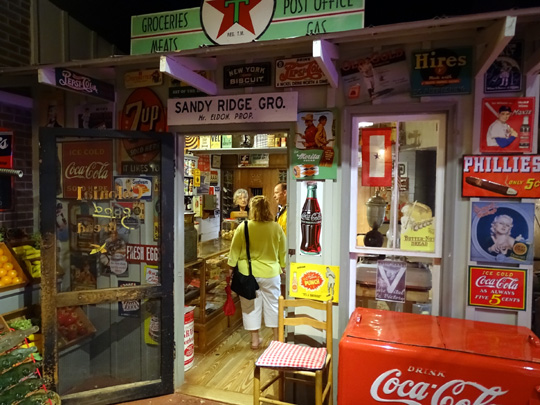
More than a storefront -- you can
walk into this one (don't know if you can buy anything).
Here are some of the on-board and overseas depictions:
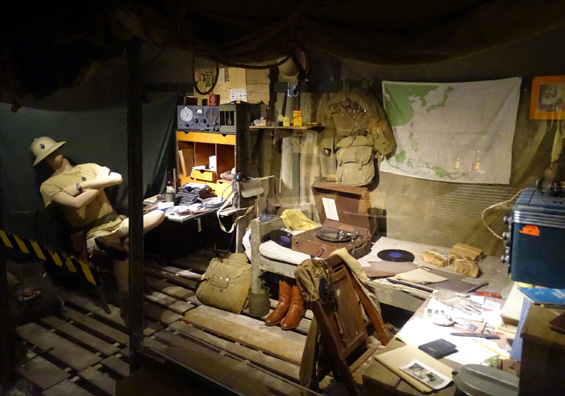
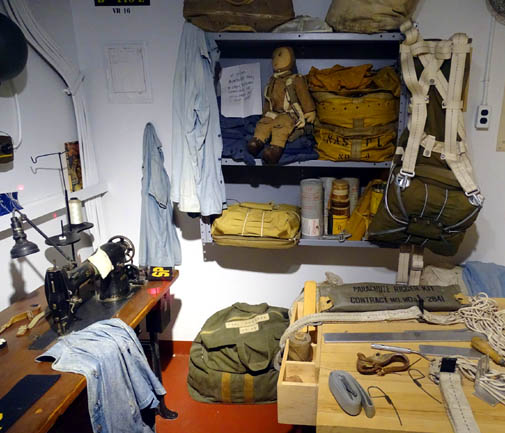

"Navy shower" rules are
stringent: 5 seconds to get wet, turn water off to soap up, then
only 10 second to rinse. The water was probably cold, too. Jim and I
joke about taking
quick "Navy showers" when we boondock and don't have water or
sewer connections.
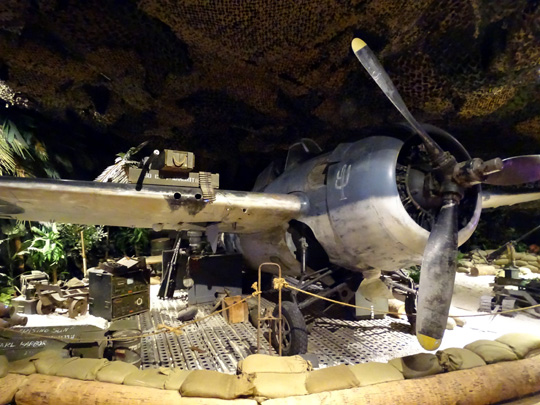
Display of camouflaged fighter
plane in the jungle (photo doesn't show the netting above it)
HANGAR DISPLAYS
More recent aircraft and exhibits from the 1960s to the
present are housed in a large hangar between the main museum and the
flight line.
Here are some of them:
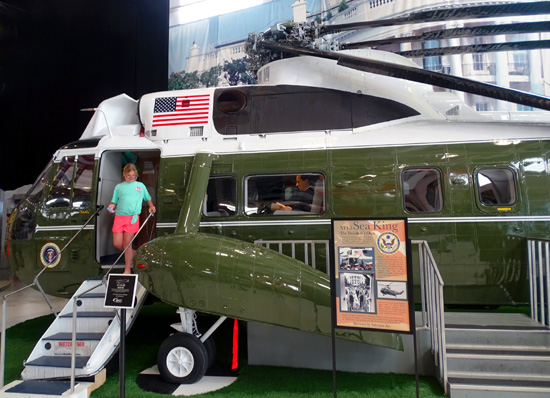
One of the first displays you see
when you walk into the hangar is this VH-3 Sea King
that Presidents Nixon and Ford
used. You can walk into the aircraft.
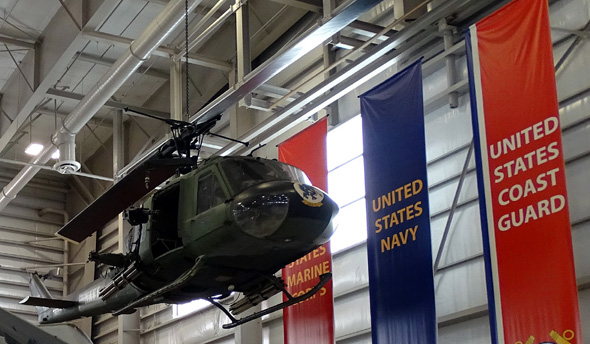
VH-1 Iroquois helicopter used in
Viet Nam; Jim flew on one similar to this.
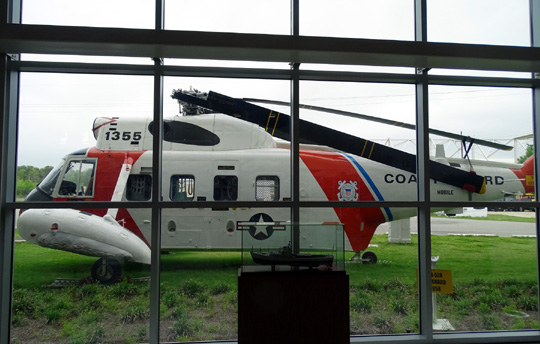
This HH-52 Sea Guard Coast Guard helicopter was
used in search and rescue missions
from 1963-1987. It sits outside the far end of the
hangar; we just looked at it through the windows.
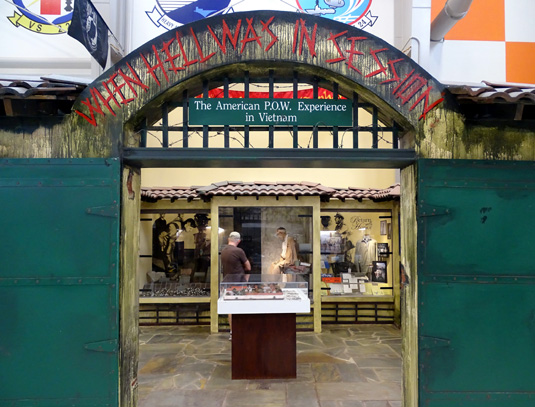
Jim was very interested in this graphic Viet Nam
POW-MIA exhibit because he served there.
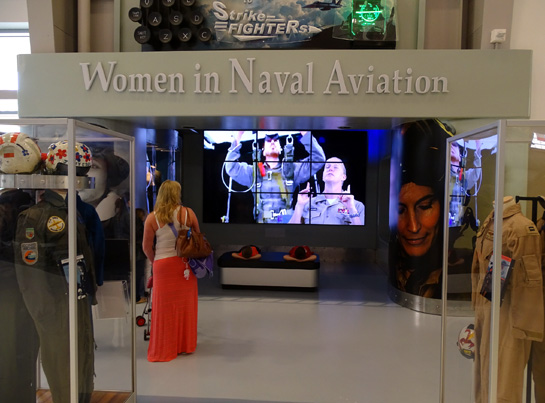
There is much more than shown here, of course.
I took dozens of photos of the museum during my four visits. I think
Jim went another time by himself, too. Did I mention that he loves the
place? If we spend more time in Pensacola another winter, he'd like to
train to be a volunteer at the museum.
Word to the wise: if you're in the Pensacola area,
go spend some time in this museum!!
Next entry: visiting two more free-and-open-to-the-public
attractions at NAS Pensacola --Fort Barrancas and the Advance Redoubt
Happy trails,
Sue
"Runtrails & Company" - Sue Norwood, Jim O'Neil,
Cody the ultra Lab, and Casey-pup
Previous
Next
© 2015 Sue Norwood and Jim O'Neil


































